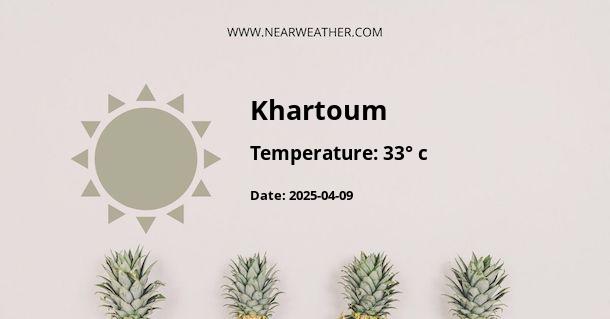Khartoum, Sudan: Climate and Weather Year Round
Khartoum, the capital city of Sudan, is located at the confluence of the Blue Nile and White Nile rivers. The city experiences a hot desert climate characterized by extremely high temperatures and arid conditions throughout the year. In this article, we will explore the climate and weather patterns in Khartoum, providing detailed information about temperature, rainfall, and other meteorological factors.
Temperature
Khartoum is known for its scorching hot temperatures, especially during the summer months. The city experiences an average high temperature of around 40°C (104°F) during the hottest months of June, July, and August. In fact, Khartoum holds the record for one of the highest temperatures ever recorded on Earth, reaching a staggering 49.6°C (121.3°F) in June 2010.
During the winter months, from December to February, temperatures in Khartoum are relatively cooler, with average highs ranging between 25°C (77°F) and 30°C (86°F). However, it is important to note that even during this time, the temperature can still reach the mid-30s°C (mid-90s°F) during the day.
The nights in Khartoum tend to be much cooler compared to the daytime temperatures. In the hottest months, nighttime lows can still remain above 25°C (77°F), while in the cooler months, temperatures can drop to around 15°C (59°F) or lower.
Rainfall
Khartoum experiences a very arid climate with minimal rainfall throughout the year. The city receives an average annual rainfall of only about 100mm (4 inches). The majority of the rainfall occurs during the summer months, particularly in July and August, when the city receives about 40mm (1.6 inches) of precipitation.
It is important to note that Khartoum is located in a region where the rainy season extends beyond the city limits. The Blue Nile and White Nile rivers bring water from the Ethiopian highlands, causing the Nile to flood in late summer. This floodwater helps to sustain the agricultural activities in the surrounding regions.
Humidity
Humidity levels in Khartoum are generally low, especially during the hot summer months. The arid conditions contribute to low relative humidity, often dropping below 20%. However, during the rainy season, humidity levels can increase slightly due to the presence of moisture in the air.
Wind
Wind patterns in Khartoum are influenced by the dominant northeast trade winds, which blow across the Sahara Desert. These winds, known as the Harmattan, can bring in dust and sand from the desert, reducing visibility and creating hazy conditions in the city.
Sunshine
Khartoum enjoys abundant sunshine throughout the year, with an average of 8 to 10 hours of sunshine per day. The city experiences very few cloudy days, making it a perfect destination for sun enthusiasts.
Summary
In summary, Khartoum experiences a hot desert climate with extremely high temperatures, minimal rainfall, and low humidity levels throughout the year. The city's summer months are scorching hot, with temperatures reaching around 40°C (104°F) and very little rainfall. In contrast, the winter months offer relatively cooler temperatures, but still remain warm by most standards. Despite the extreme climate, Khartoum boasts abundant sunshine, making it an ideal destination for those seeking sun-filled days.
A - Khartoum's Latitude is 15.551770 & Longitude is 32.532410.
A - Weather in Khartoum is 33° today.
A - Climate Conditions in Khartoum shows broken clouds today.
A - Humidity in Khartoum is 6% today.
A - Wind speed in Khartoum is 11.23 km/h, flowing at 63° wind direction. today.
